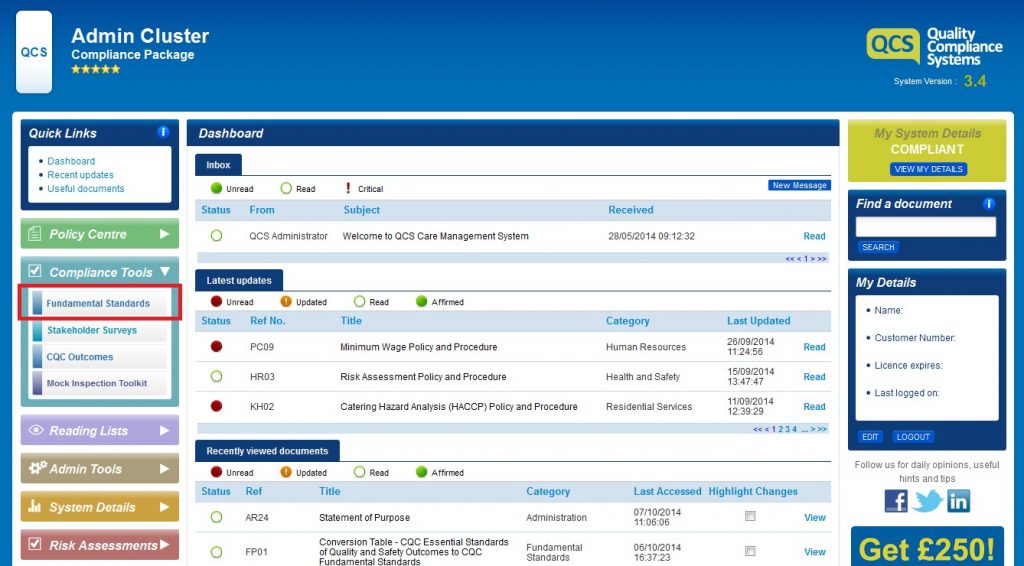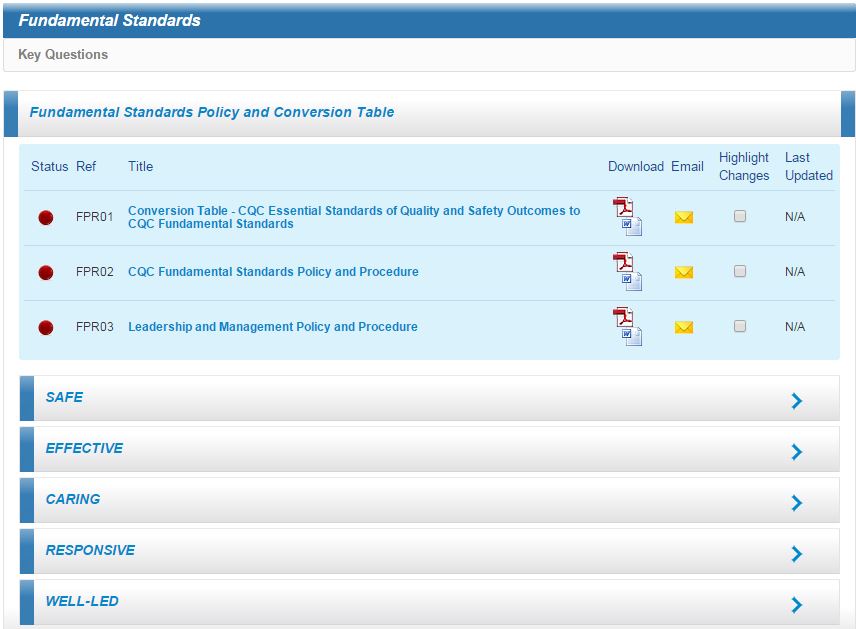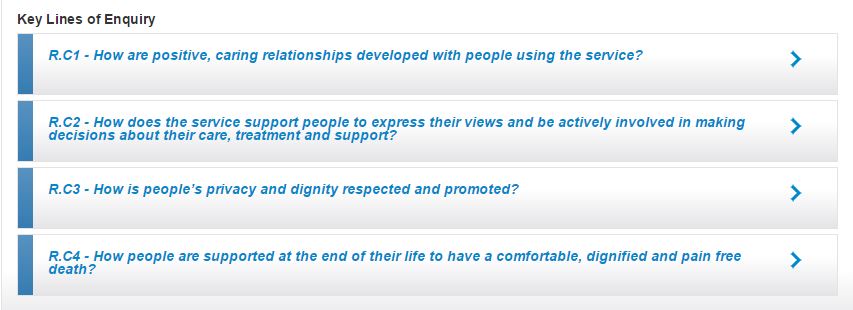QCS are pleased to announce the launch of our new Fundamental Standards Draft Guidance to enable you to prepare for inspection under the CQCs ‘Fresh Start’.
To get started, navigate to Compliance Tools at the left hand side of the screen
Fundamental Standards
You will see that this section is divided into six sub-sections.
Fundamental Standards Guidance Policies:
Conversion Table, Fundamental Standards Policy, Leadership & Management Policy and Procedure, and Provider Information Return Policy and Procedure (PIR)
The CQC has previously inspected service providers in relation to 28 outcomes – examples of what it expects people to experience when the essential standards of quality and safety are being met.
These outcomes are being replaced with 11 Fundamental Standards of safety and quality – common-sense statements that describe the basic requirements that all providers registered with the CQC should always meet.
In this section you will find a conversion table. The conversion table maps previous outcomes onto each relevant Fundamental Standard and the key questions that will be asked to ensure that they are being met.
Also included in this section is a Fundamental Standards Policy. This new policy gives our approach to the fundamental standards and how we propose to meet the new CQC standards.
We’ve also developed a Leadership and Management Policy and Procedure. These two terms are often used simultaneously, but the responsibilities of each are actually very different. This policy will explain what makes a leader, what makes a manager, and what each should do to make sure you’re providing a quality service.
Finally, we’ve added a Provider Information Return Policy and Procedure. The Provider Information Return (PIR) asks questions on each of the five Key Questions (Safe, Effective, Caring, Responsive, and Well-led). The questions ask what you are doing to meet the Key Questions, what improvements you plan to make, and how you plan to implement them. Our new policy gives helpful information and guidance on how to complete the return.
Key Questions: Safe, Effective, Caring, Responsive, and Well-led
The other five sub-sections are the five key questions against which service providers will be assessed:
- Are they safe?
- Are they effective?
- Are they caring?
- Are they responsive to people’s needs
- Are they well-led?
The CQC’s definitions of the five key questions are:
- Safe – by safe, we mean that people are protected from abuse and avoidable harm.
- Effective – by effective, we mean that people’s care, treatment and support achieves good outcomes, promotes a good quality of life and is based on the best available evidence.
- Caring – by caring, we mean that staff involve and treat people with compassion, kindness, dignity and respect.
- Responsive – by responsive, we mean that services are organised so that they meet people’s needs.
- Well-led – by well-led, we mean that the leadership, management and governance of the organisation assures the delivery of high-quality person-centred care, supports learning and innovation, and promotes an open and fair culture.
Key Lines of Enquiry (KLOEs)
The CQC will ask further sub-questions to assess the service provider against each of the five standards. These are known as Key Lines of Enquiry (KLOEs). Click on the standard (e.g. ‘Safe’); this will bring up the policy relating to this standard:
And a list of KLOEs that CQC inspectors will ask, and which service providers should ask themselves when assessing their own service:
KLOE Policies
For each of KLOE there is a companion policy. This policy notes each of the prompts associated with the KLOE as well as the primary and supporting policies in the QCS system that support that specific KLOE. Also provided within each KLOE policy is section on providing evidence. The evidence section gives advice on planning for your inspection, gathering feedback, talking to service users and staff, observations and reviewing records.
For each KLOE, we direct you to the policies and procedures you should follow to meet that KLOE. These are divided into ‘Primary’ and ‘Supporting’ policies and procedures. Click onto either ‘Primary’ or ‘Supporting’. This will bring up a list of sections of QCS policies which mirror those sections in the QCS Policy Centre. Primary policies directly support the KLOE and implementing them into your service will help you to meet the KLOE. Supporting policies are those that provide additional support to meet the KLOE.
Click onto, for example, ‘Administration’. This will bring up a list of Administration policies and procedures which relate to this KLOE and should be implemented in order to meet the KLOE.
You can view each document by clicking on its name. You can download the documents in either PDF format (no limit on downloads) or Word format (30 downloads per calendar month). PDF files cannot be amended; Word documents can.
As CQC releases more details we will continue to develop new features and tools to assist with your compliance.
As always, if you have any questions or need any assistance, please contact our Customer Care Team on 0333 405 33 33 option 2.









